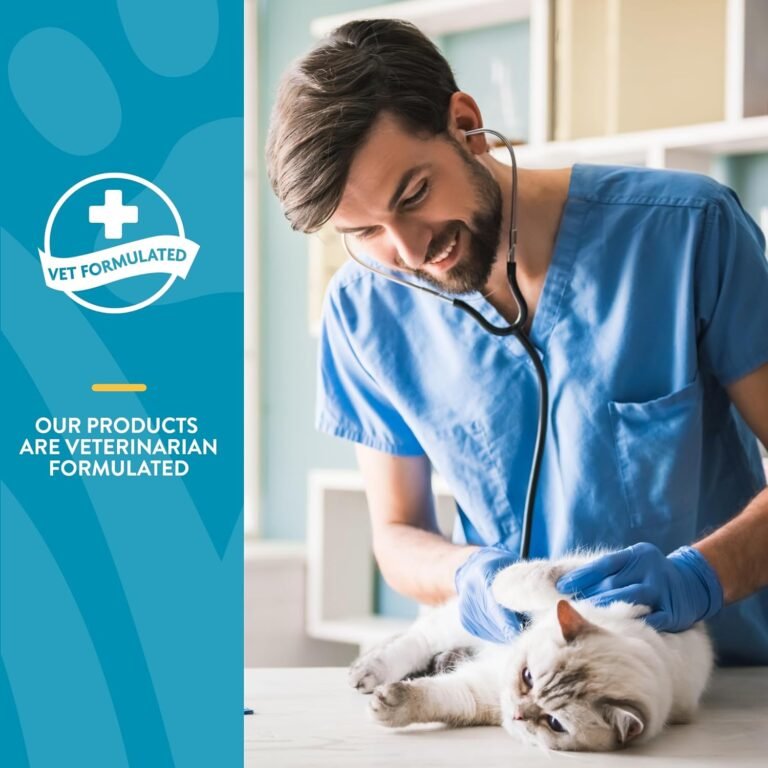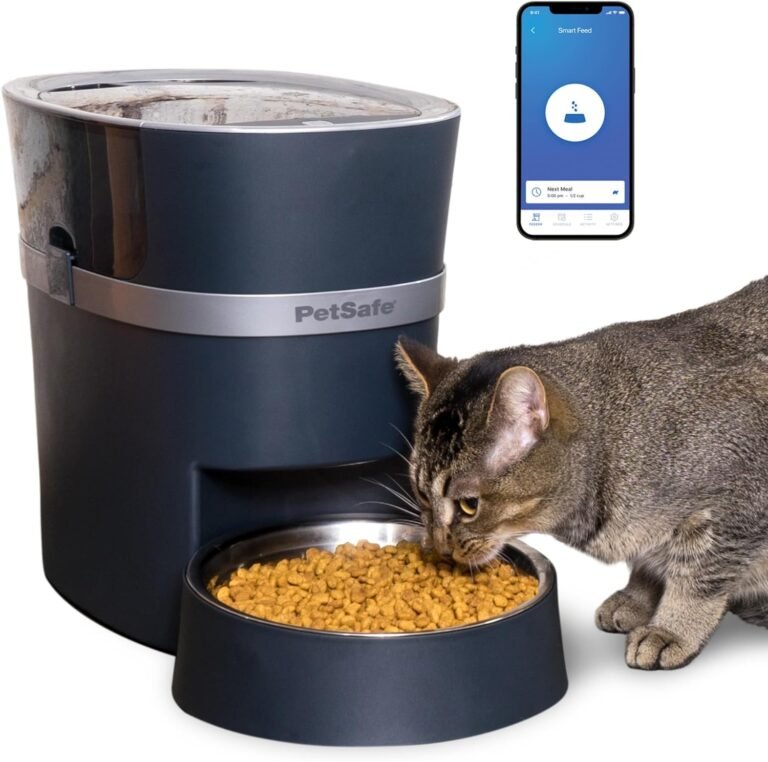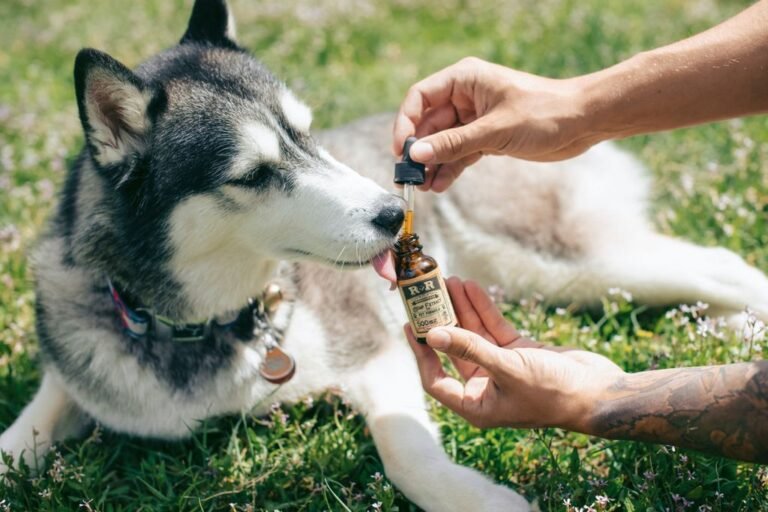Outdoor Adventures and Pet Safety: Balancing Fun and Well-being
When it comes to outdoor adventures with your pet, it’s important to prioritize their safety and well-being. Whether you’re hiking, camping, or enjoying water activities, there are risks involved that can be mitigated with proper preparation and precautions. This article will provide key takeaways on pet safety in outdoor adventures, water safety for pets, dealing with wildlife encounters, and protecting your pet from extreme weather conditions.
Key Takeaways
- Understand the risks involved in outdoor activities and take necessary precautions.
- Prepare your pet for outdoor adventures by ensuring they are properly trained and have the necessary vaccinations.
- Choose the right gear for your pet, including a secure harness, life jacket, and protective clothing.
- Follow safety tips for hiking and camping with your pet, such as keeping them on a leash and providing them with plenty of water and shade.
- Know your pet’s swimming abilities and take appropriate water safety precautions, such as using a life jacket and avoiding dangerous water activities.
The Importance of Pet Safety in Outdoor Adventures

Understanding the Risks
When venturing into the great outdoors with your furry friend, it’s important to be aware of the potential risks that they may encounter. From unpredictable wildlife to extreme weather conditions, there are several factors that can impact your pet’s safety and wellbeing. Whisker Wellbeing is one aspect that should not be overlooked. Ensuring that your pet’s whiskers are protected and cared for is essential for their overall comfort and sensory perception. Whiskers play a crucial role in helping pets navigate their surroundings and detect potential dangers. By keeping your pet’s whiskers in good condition, you can help them stay alert and safe during outdoor adventures.
Preparing Your Pet for Outdoor Activities
Before embarking on any outdoor adventure with your pet, it is important to make sure they are well-prepared. Dogs are especially eager to explore the great outdoors, but it’s crucial to ensure their safety and well-being. Here are some tips to help you prepare your pet for outdoor activities:
- Familiarize your pet with the outdoors: Take your pet on short walks or visits to parks to get them accustomed to the sights, sounds, and smells of nature.
- Check their health and vaccinations: Schedule a visit to the veterinarian to ensure your pet is up to date on vaccinations and in good health.
- Train your pet: Teach your pet basic commands such as ‘sit,’ ‘stay,’ and ‘come’ to ensure they respond to your instructions and stay safe during outdoor activities.
- Pack essential items: Bring along items such as a leash, collar with identification tags, water, food, waste bags, and any necessary medications.
- Research the location: Before heading out, research the area you plan to visit to ensure it is pet-friendly and safe for your pet’s specific needs.
Remember, preparing your pet for outdoor activities is essential to ensure their safety and enjoyment. By taking the necessary precautions, you can create wonderful memories together in the great outdoors.
Choosing the Right Gear for Your Pet
When it comes to outdoor adventures with your pet, choosing the right gear is essential for their safety and comfort. Condition is an important factor to consider when selecting gear for your furry friend. You want to ensure that the gear is in good condition and free from any damage or wear that could compromise its effectiveness. This includes checking for any tears, frayed edges, or loose straps. It’s also important to choose gear that is appropriate for your pet’s size and breed. For example, a small dog may require a different size harness or life jacket compared to a larger dog. Taking the time to properly assess the condition of the gear and select the right size will help ensure that your pet is well-equipped for your outdoor adventures.
Safety Tips for Hiking and Camping with Your Pet
When embarking on outdoor adventures with your pet, it’s important to prioritize their safety and well-being. Here are some tips to ensure a fun and safe experience:
- Plan ahead: Before heading out, research the trail or campsite to ensure it is pet-friendly and suitable for your furry friend. Check for any restrictions or regulations that may apply.
- Pack the essentials: Make sure to bring enough food, water, and any necessary medications for your pet. Additionally, pack a first aid kit specifically designed for pets, including items such as bandages, antiseptic wipes, and tweezers.
- Keep them leashed: While it may be tempting to let your pet roam freely, it’s important to keep them on a leash at all times. This not only ensures their safety but also helps protect wildlife and other hikers.
- HAVE PET TRACKERS< ADD HERE LINK TO PER TRACKERS
- Be mindful of weather conditions: Check the weather forecast before heading out and dress your pet accordingly. In hot weather, provide shade and plenty of water to prevent overheating. In cold weather, consider using protective clothing or booties to keep their paws warm.
- Watch out for hazards: Keep an eye out for potential hazards such as steep cliffs, poisonous plants, or sharp objects. Be aware of your surroundings and guide your pet away from any potential dangers.
Remember, the key to a successful outdoor adventure with your pet is preparation and vigilance. By following these safety tips, you can ensure a memorable and enjoyable experience for both you and your furry companion.
Water Safety for Pets: Enjoying the Great Outdoors Safely

Knowing Your Pet’s Swimming Abilities
Before taking your pet for a swim, it’s important to understand their swimming abilities. Not all pets are natural swimmers, and some may struggle in the water. Take the time to observe your pet’s behavior around water and assess their comfort level. If your pet is hesitant or shows signs of fear, it’s best to start with shallow water and gradually introduce them to deeper areas. Safety should always be the top priority, so never force your pet into the water if they are not comfortable. It’s also important to note that certain breeds, such as Bulldogs or Pugs, may have difficulty swimming due to their body structure. Keep a close eye on your pet while they are in the water and be ready to assist if needed. Remember, prevention is key when it comes to water safety for your furry friend.
Water Safety Precautions for Dogs
When it comes to water safety for your furry friend, there are a few important precautions you should take. First and foremost, always supervise your dog when they are near water. Even if your dog is a strong swimmer, accidents can happen, and it’s important to be there to assist if needed. Additionally, it’s crucial to be aware of any potential hazards in the water, such as strong currents or underwater debris. Keep an eye out for signs of fatigue or distress in your dog, and provide them with plenty of breaks and fresh water to drink. Lastly, be mindful of unpleasant smells that your dog may encounter in the water, as they can be harmful if ingested. By following these safety precautions, you can ensure that your dog has a safe and enjoyable time in the water.
Water Safety Precautions for Cats
When it comes to water safety for cats, there are a few important precautions to keep in mind. Cats are generally not as comfortable in water as dogs, so it’s important to take extra care when introducing them to water activities. Cats should never be forced into water and should always have the option to stay on dry land if they prefer. If you do decide to bring your cat near water, make sure they are wearing a properly fitted harness or life jacket to ensure their safety. Additionally, it’s important to be aware of any potential hazards in the water, such as strong currents or toxic substances. Always keep a close eye on your cat and be ready to intervene if necessary. Remember, the safety and well-being of your cat should always be your top priority.
Water Activities to Avoid with Your Pet
When enjoying water activities with your pet, it’s important to be aware of certain activities that may pose risks to their safety. While it can be tempting to let your furry friend join in on all the fun, it’s crucial to prioritize their well-being. Here are some water activities to avoid with your pet:
- Rough Waters: Avoid taking your pet to areas with rough waters, such as strong currents or turbulent waves. These conditions can be dangerous for both you and your pet, increasing the risk of accidents and injuries.
- Deep Water: Be cautious when allowing your pet to swim in deep water. Some pets may not be strong swimmers or may tire easily, putting them at risk of exhaustion or drowning. Stick to shallow areas where your pet can comfortably touch the ground.
- Fast-moving Water: Avoid letting your pet swim in fast-moving water, such as rivers or streams with strong currents. The force of the water can be overwhelming for pets and make it difficult for them to swim or stay afloat.
Remember, the safety of your pet should always come first. By avoiding these water activities, you can ensure a fun and safe outdoor adventure for both you and your furry companion.
Keeping Your Pet Safe from Wildlife Encounters

Identifying Potential Wildlife Threats
When venturing into the great outdoors with your pet, it’s important to be aware of potential wildlife threats. Wild animals can pose a danger to both you and your furry companion, so it’s crucial to know how to identify them and take appropriate precautions. Here are some key points to consider:
- Research the area: Before heading out on your adventure, research the local wildlife in the area you’ll be visiting. This will help you understand what types of animals you may encounter and how to best avoid them.
- Signs of wildlife activity: Keep an eye out for signs of wildlife activity, such as tracks, droppings, or nests. These can indicate the presence of animals nearby and give you a clue as to what to expect.
- Avoiding wildlife habitats: Be mindful of where you and your pet are walking or camping. Avoid areas that are known to be habitats for potentially dangerous animals, such as bear dens or snake nests.
- Leash your pet: Keeping your pet on a leash can help prevent them from wandering off and potentially encountering wildlife. It also allows you to have better control over their movements and keep them close to you.
- Make noise: When hiking or walking in areas with dense vegetation, make noise to alert wildlife of your presence. This can help prevent surprise encounters and give animals a chance to move away.
Remember, being prepared and knowledgeable about potential wildlife threats is essential for keeping both you and your pet safe during outdoor adventures.
Preventing Wildlife Encounters
When enjoying outdoor adventures with your pet, it’s important to take precautions to prevent wildlife encounters. Wild animals can pose a threat to the safety and well-being of your furry friend. Here are some tips to help you keep your pet safe:
- Keep your pet on a leash: By keeping your pet on a leash, you can have better control over their movements and prevent them from wandering off and encountering wildlife.
- Stay on designated trails: Stick to designated trails and avoid venturing into areas where wildlife is known to be present. This reduces the chances of your pet coming into contact with potentially dangerous animals.
- Make noise: When hiking or camping, make noise to alert wildlife of your presence. This can help scare them away and prevent any potential encounters.
- Avoid leaving food out: Leaving food out can attract wildlife to your campsite or hiking area. Make sure to properly store your food to avoid attracting animals.
Remember, by taking these precautions, you can ensure a safe and enjoyable outdoor adventure with your pet.
Dealing with Wildlife Encounters
When encountering wildlife during your outdoor adventures, it’s important to remain calm and take appropriate measures to ensure the safety of both you and your pet. Being prepared is key to handling these situations effectively. Here are some tips to help you deal with wildlife encounters:
- Stay alert: Keep an eye out for any signs of wildlife in the area. Look for tracks, droppings, or any unusual noises that may indicate their presence.
- Keep your distance: It’s important to maintain a safe distance from wildlife. Respect their space and avoid approaching or cornering them.
- Make noise: If you come across wildlife, make yourself known by speaking loudly, clapping your hands, or using noise-making devices. This can help scare them away and prevent any potential conflicts.
- Do not feed or touch: Never attempt to feed or touch wild animals. This can disrupt their natural behavior and may put both you and the animal at risk.
- Secure your food and trash: Properly store your food and dispose of trash in designated containers to avoid attracting wildlife to your campsite.
Remember, wildlife encounters can be unpredictable, so it’s important to stay vigilant and follow these guidelines to ensure a safe and enjoyable outdoor experience.
Emergency Measures for Wildlife Attacks
In the unfortunate event of a wildlife attack, it is crucial to prioritize your safety and the safety of your pet. Remain calm and try to assess the situation quickly. Reacting calmly can help prevent further escalation of the situation. If possible, create distance between you and the wildlife by slowly backing away. Avoid turning your back on the animal and do not run, as this may trigger a chase response. Stay alert and be prepared to use any available objects as a deterrent. Make loud noises or use a whistle to scare away the wildlife. It is important to remember that wildlife encounters are unpredictable, and each situation may require different actions. Seek immediate medical attention if you or your pet are injured during a wildlife attack.
Protecting Your Pet from Extreme Weather Conditions

Understanding the Impact of Weather on Pets
When it comes to your pet’s wellbeing, it’s important to consider the impact of weather conditions. Extreme temperatures can have a significant effect on your furry friend, so it’s crucial to take necessary precautions. Hot weather can lead to heatstroke and dehydration, while cold weather can cause hypothermia and frostbite. It’s essential to be aware of the signs of these conditions and take appropriate action to keep your pet safe and comfortable.
To ensure your pet’s whisker wellbeing, here are some tips to consider:
- Provide plenty of fresh water and shade during hot weather.
- Avoid leaving your pet in a parked car, as temperatures can rise quickly.
- Limit outdoor activities during extreme weather conditions.
Remember, your pet relies on you to keep them safe and healthy, so always prioritize their wellbeing in any weather situation.
Hot Weather Safety Tips for Pets
When it comes to keeping your pet safe in hot weather, there are a few important things to keep in mind. First, hydration is key. Make sure your pet has access to fresh water at all times, and consider investing in a HHOLOVE Automatic Cat Feeder with Camera that can monitor your pet’s water intake. Additionally, it’s important to provide shade for your pet to escape the heat. This can be in the form of a shaded area in your backyard or a pet-friendly sunshade for outdoor activities. Lastly, be mindful of the temperature of the ground. Hot pavement or sand can burn your pet’s paws, so try to walk them on grass or use protective booties. By following these tips, you can ensure that your pet stays safe and comfortable during hot weather.
Cold Weather Safety Tips for Pets
When it comes to keeping your pet safe in cold weather, there are a few important things to keep in mind. Proper insulation is key to protecting your pet from the cold. Make sure your pet has a warm and comfortable shelter, such as a cozy dog house or a heated bed. It’s also important to limit outdoor time in extreme cold temperatures. Frostbite and hypothermia can occur quickly, so it’s best to keep your pet indoors as much as possible.
To keep your pet warm during walks, consider using dog boots or paw wax to protect their paws from ice and salt. Waterless dog shampoo spray can be a convenient option for keeping your pet clean without the need for a bath in cold weather. It’s important to dry your pet thoroughly after being outside to prevent them from getting chilled. Remember to check for signs of cold-related health issues such as shivering, lethargy, or pale gums, and consult your veterinarian if you have any concerns.
Protecting Your Pet from Natural Disasters
When it comes to protecting your pet from natural disasters, there are several important steps you can take. Cleanliness is one aspect that should not be overlooked. Keeping your pet’s living area clean and free from debris is essential for their safety. Regularly clean their food and water bowls to prevent the growth of bacteria. Additionally, make sure to clean your pet’s bedding and toys regularly to maintain a healthy environment. By prioritizing cleanliness, you can help reduce the risk of illness and ensure your pet’s well-being during natural disasters.
Protecting Your Pet from Extreme Weather Conditions
Conclusion
In conclusion, outdoor adventures can be a great way to bond with your pet and provide them with exercise and mental stimulation. However, it is important to prioritize their safety and well-being. By following the tips and guidelines mentioned in this article, you can ensure that your pet stays safe and healthy during your outdoor adventures. Remember to always keep an eye on your pet, provide them with proper training and socialization, and be prepared for any emergencies. With the right balance of fun and responsibility, you and your pet can enjoy many memorable outdoor adventures together.
Frequently Asked Questions
1. Can I take my pet hiking without a leash?
It is generally recommended to keep your pet on a leash while hiking to ensure their safety and prevent them from getting lost or encountering wildlife.
2. How do I prepare my pet for outdoor activities?
Before taking your pet on outdoor adventures, make sure they are up to date on vaccinations, have proper identification, and are trained to follow basic commands.
3. What gear do I need for my pet during outdoor activities?
Essential gear for your pet may include a sturdy leash, harness, collar with identification tags, water and food bowls, waste bags, a first aid kit, and any necessary medications.
4. How can I keep my pet safe while swimming?
To keep your pet safe while swimming, make sure they are comfortable in the water, supervise them at all times, provide a life jacket if needed, and avoid strong currents or hazardous water conditions.
5. What should I do if my pet encounters wildlife?
If your pet encounters wildlife, try to calmly remove them from the situation. Avoid approaching or antagonizing the wildlife and contact local authorities or animal control if necessary.
6. How can I protect my pet from extreme weather conditions?
To protect your pet from extreme weather conditions, provide them with appropriate shelter, avoid leaving them outside for extended periods, provide plenty of water, and adjust their exercise routine accordingly.







